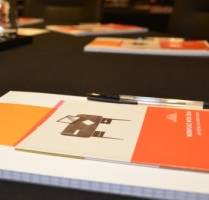December 9, 2014
UK employers lag behind on the importance they place on workplace health
 Two in five (40%) of UK employees say their employer offers no health or wellbeing benefits, a new study on workplace health has revealed. Although the research, conducted by Bupa, found that two thirds (64%) of UK employers agreed that a healthy workforce is a more productive one, two in five (40%) employees said their employer offers no health or wellbeing benefits. Three in ten (28%) employees went as far as saying that when it comes to wellbeing, their company is all talk but no action. UK employers lag behind many other countries on the importance they place on workplace health. Just 57 per cent of UK employers agreed that good health makes good business sense compared to 85 per cent in Australia and 82 per cent in Poland. Meanwhile just over half (58%) of UK employers think that an unhealthy workforce is a risk to business performance compared to 81 per cent in New Zealand and 80 per cent in Spain.
Two in five (40%) of UK employees say their employer offers no health or wellbeing benefits, a new study on workplace health has revealed. Although the research, conducted by Bupa, found that two thirds (64%) of UK employers agreed that a healthy workforce is a more productive one, two in five (40%) employees said their employer offers no health or wellbeing benefits. Three in ten (28%) employees went as far as saying that when it comes to wellbeing, their company is all talk but no action. UK employers lag behind many other countries on the importance they place on workplace health. Just 57 per cent of UK employers agreed that good health makes good business sense compared to 85 per cent in Australia and 82 per cent in Poland. Meanwhile just over half (58%) of UK employers think that an unhealthy workforce is a risk to business performance compared to 81 per cent in New Zealand and 80 per cent in Spain.





















December 17, 2014
Flexible working is best built on the foundations of a great office
by Charles Marks • Comment, Flexible working, Workplace design
(more…)